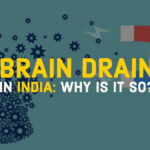Quality of higher education in India seems to be inversely proportional to the intensity of regulation. Does empirical data support this proposition?
It was in 2017 that the author published a piece by the title ‘Higher Education Low Regulation’ (Indian Express, May 2, 2017) which empirically established that the ‘quality of higher education in India is inversely proportional to the intensity of regulation’. In that piece, the author had categorized the development of higher education into four broad groups comprising universities established during the period of:
- No Regulation (1857-1925) – A time period when there were no regulatory bodies for higher education and the universities were empowered to take their academic, administrative and financial decision through their authorities;
- Loose Coordination (1925 – 1956) – A time period after the establishment of the Inter University Board, which is now known as the Association of Indian Universities (AIU); it had no regulatory powers upon universities but was a kind of conglomeration of vice-chancellors who would occasionally assemble to deliberate on pressing and emerging issues and the resolution passed by it would be a kind of policy directions to all higher educational institutions;
- Single Regulator (1956 to 1992) – During this time period, the UGC was a kind of sole regulatory authority to coordinate and maintain the standards of all the different kinds of higher education and higher educational institutions; and
- Multiple Regulatory Regime (1992 onwards) – A wide variety of regulatory bodies and professional councils, nearly as many as 14, were either set up or became actively involved in regulating a specific type of higher education which fell under their subject domain.
- Additionally, there are higher educational institutions which do not come under the purview of UGC, AICTE or any other regulatory bodies – like Indian Institutes of Technology (IITs), National Institutes of Technology (NITs), Indian Institute of Science Education and Research (IISERs) and the Indian Institutes of Information Technology (IIITs) – collectively called as the Institutions of National Importance (INIs) or, more recently, they have come to be referred to as the Centrally Funded Technical and Scientific Institutions (CFTSIs).
Quality of higher education in India is inversely proportional to the intensity of regulation.
The above-referred article had examined the performance of the aforementioned five types of institutions in the National Institutional Ranking Framework (NIRF) which clearly proved that the less regulated institutions performed far better than those that regulated more intensely. That article received accolades and the Times of India reflected on it in its editorial. However, those in favour of a strong regulatory framework criticised it on the ground that the performance of the higher educational institutions has been assessed using the NIRF alone in the article. And, considering the fact that NIRF was then only two years old, and its methodology still evolving, the article could not be trusted for its conclusion. In view of this criticism, it was felt necessary to further examine the proposition using other important parameters of quality and excellence. Hence, this time the author has chosen the NAAC Grades, and the Academic Ranking of World Universities (ARWU), the Quacquarelli Symonds (QS), and the Times Higher Education (THE) World and Regional rankings of universities.
National Assessment and Accreditation Council (NAAC), established in 1994 as an Inter-University Centre under the University Grants Commission (UGC), is the only authorised body to conduct institutional accreditation in India. Unlike most other bodies across the world which accredit higher educational institutions in a binary format (accredited or unaccredited), NAAC also awards grades to accredited universities in India through a rigorous process of self-study reports and peer-team visits. Although the grading system of NAAC has undergone several changes over time, it was possible to identify universities that were accredited with A or higher grades. So far, NAAC has accredited 300 universities of which 192 (64 percent) are accredited with A or higher grades.
You May Like: Quality Education: A Luxury or A Fundamental Right?
It is not only the NIRF but also the time-tested NAAC grades which amply prove that stringent regulatory regimes have not necessarily promoted excellence in higher education.
It can not be taken as a sheer coincidence that a significantly higher proportion of universities (80% and 75%, respectively) that were established during the period of ‘no regulation’ and ‘loose coordination’ were found good enough to get A or higher grades. This is in contrast to only 68 and 58 percent of the universities established during the period of ‘single regulator’ and ‘multiple regulators’, respectively, bagging A or higher grades from NAAC. Obviously, it is not only the newly launched NIRF but also the time-tested NAAC grades which amply prove the point that stringent regulatory regimes have not necessarily promoted excellence in higher education (Table 1).

Since institutions of national importance (IITs, NITs, IISERs, etc) are not accredited by NAAC, this data does not let us ascertain as to whether the institutions outside the regulatory purview, i.e., the institutions of national importance did any better than the universities. Attention was, therefore, turned to the three most popular global rankings, i.e. the Shanghai-based Academic Ranking of the World Universities (ARWU), the Quacquarelli Symonds (QS), and the Times Higher Education (THE) world ranking of universities.
As regards ARWU, its parameters, with very high weightage for the Nobel Laureates and Field Medal awardees amongst the faculty and alumni and highly cited research, are so stringent that only one university from India finds a place in the coveted list, albeit almost at the bottom rank of 301-400. The origin and development of this university dates back to the time when universities were largely left to look after themselves.
In comparison, and thanks to the persistent exhortation by the then President of India, Shri Pranab Mukherjee, a larger number of universities and institutions of importance, have lately started participating and getting ranked in QS and THE world as well as regional rankings. During the year 2016-17, QS ranked 7 universities and 7 institutions of national importance. Reading with reference to the total number of institutions of each type, this means that while only an abysmal 0.96 percent of the universities could make it to the coveted list, the proportion of the institutions of national importance was as high as 12.5 percent. Further, all the seven universities were established during the period of ‘No Regulation’ or ‘Loose Coordination’.
You May Like: School Dropout of Tribal Children in Chattisgarh: A Study
Most importantly, on average, the institutions of national importance were ranked significantly higher than the universities. THE World Ranking further reinforces the same trend with the only difference that relatively a larger number of universities (23) and institutions of national importance (8) found a place in this ranking. The findings lead to the conclusion that universities fare rather poorly in comparison to the institutions of national importance. Not only that fewer universities could get ranked in these two world rankings, what is most disquieting is the frightful fact that most of our universities are consistently ranked significantly lower than the institutions of national importance. (Table 2)

Regional rankings – QS Asia, THE Asia, and THE BRICS – discern no divergence as far as the participation and ranking of universities vis-à-vis institutions of national importance are concerned. Instead, the data presents a rather distressing scenario. While an overwhelming proportion of institutions of national importance ranked by the QS Asia, THE Asia, and THE BRICS found place amongst the Top 100 universities, the proportion of universities in the coveted list was abysmally low. (Table 3).

Performance of universities across all measures, right from the NIRF ranking to the NAAC grades, to Global and Regional rankings, clearly evince that institutions outside the purview of regulatory regimes do exceedingly better than those that are subjected to the stricter regulatory regimes. Discernibly, neither the absence of regulations destroys the universities nor stricter regulations necessarily promote excellence in higher education. Relaxing the regulatory environment seems imminent for promoting excellence in higher education.
The above analysis is based on the data pertaining to 2016, which is somewhat dated. Due to the paucity of time, the author has not been able to update it to the current level. However, a cursory glance at the accreditation grade and the data on the regional and the world ranking of universities in 2020 reveals no change fundamentally affecting the hypothesis.
Also Read: Anniversary of NEP 2020: Education needs intensive care
Relaxing the regulatory environment seems imminent for promoting excellence in higher education.
Finally, the National Education Policy (NEP 2020) reviling the regulatory regimes in higher education for being “too heavy-handed” and “attempting too much with little effect” posited for a “light but tight’ regulation. However, taking a clue from the establishment of the National Medical Commission of India (NMCI), it proffers a single regulator for all higher education except medical and law education. The policy, thus, envisages an overarching Higher Education Commission (HECI) with four independent verticals – National Higher Education Regulatory Council (NHERC), National Accreditation Council (NAC), Higher Education Grants Council (HEGC), and General Education Council (GEC) with existing regulatory bodies metamorphosed as members into professional standard-setting bodies, to take care of the regulation, accreditation, funding and grants, and standards-setting. Thankfully, the five independent and separate regulatory institutions recommended in the draft NEP 2019 have, thus, been collapsed into one, albeit the existing regulatory bodies and professional councils would continue to exist and operate as standards-setting bodies.
While NEP 2020 favours separate regulation for medical education, it envisions healthcare education as an integrative system affording opportunities to the students of allopathic medical education to have a basic understanding of Ayurveda, Yoga, Naturopathy, Unani, Siddha, Homeopathy (AYUSH), and vice versa. This remarkably distinctive idea could have been easier to implement if all of the medical education – allopathy, homoeopathy and the Indian system of medicine – was to be regulated in a coordinated manner by a single regulatory body. Alas, this seems to be a missed opportunity as two separate Bills, namely the National Commission for Homoeopathy (NCH) and the National Commission for Indian System of Medicine (NCISM), now stand passed thereby paving way for separate regulatory commissions.
Citing the example of the medical education, the other regulatory bodies and professional councils have also been quietly clamouring to continue to retain their authority to regulate higher education in their domain.
Also Read: National Education Policy 2020: Issues and Implications
Thus in medical education, the number of regulatory bodies and their associated institutions have only increased in the country. The three legislation – NMCI, NCH, and NCISM – all seek to repeal the existing legislation dealing with their domain; ensuring the availability of adequate and high-quality medical professionals; adoption of the latest medical research; undertaking a periodic assessment of medical institutions, and providing for effective grievance redressal mechanism in their respective domain of the medical profession.
Each of these Commissions is to be guided by the National Advisory Council and supported by the State Medical Councils to be set up separately for each of the three medical education domains. Besides, each of these three Commissions shall have a separate Ethics & Medical Education Board; Medical Assessment & Rating Board; and Medical Registration Board to deal with setting standards in medical education at undergraduate and postgraduate level; approval and recognition of programmes, courses, intake and institutions; and to maintain the national register of licensed practitioners respectively in their domain of medical education and profession. All the three National Commissions in medical education are also mandated to organise a uniform National Eligibility-cum-Entrance Test for admission to undergraduate and postgraduate super-speciality medical education in all medical institutions regulated under the Act; common final year undergraduate examination, called the National Exit Test, for students graduating from medical institutions to obtain the license for the practice. This test will also serve as the basis for admission into post-graduate courses at medical institutions. Additionally, the NCH and NCISM are also empowered to conduct National Teachers’ Eligibility Test for postgraduates in their respective domains who wish to take up teaching that particular discipline as a profession.
Citing the example of medical education, the other regulatory bodies and professional councils have also been quietly clamouring to continue to retain their authority to regulate higher education in their domain. However, with the idea of the single regulator having been mentioned in the budget speech of the last year, it may be hoped to see the light of the day soon. Will, that bring about drastic changes in the way higher education is organised and regulated? Apparently yes. But will this lead to seminal changes in the quality and excellence of higher education? That will depend upon the quality of people who are made part of the new regulatory regime, the process that the new regulator develops and implements, understanding the context in which the higher educational institutions exist and operate in the country.
Disclaimer: The views expressed in this article are of the author solely. TheRise.co.in neither endorses nor is responsible for them.
About the author
Dr. Furqan Qamar is a former professor of management at Jamia Millia Islamia and an education advisor in the Planning Commission, now NITI Aayog, is currently the Chief Advisor to the Chancellor at Integral University, Lucknow. He has been the former Vice-Chancellor of the University of Rajasthan and Central University of Himachal Pradesh and Secretary General of Association of Indian Universities..









































Pingback: Excess Impedes Excellence – Furqan Qamar
Pingback: In Defence of Higher Education - TheRise.co.in
Pingback: Why do Indians Go Abroad for Higher Education? - TheRise.co.in